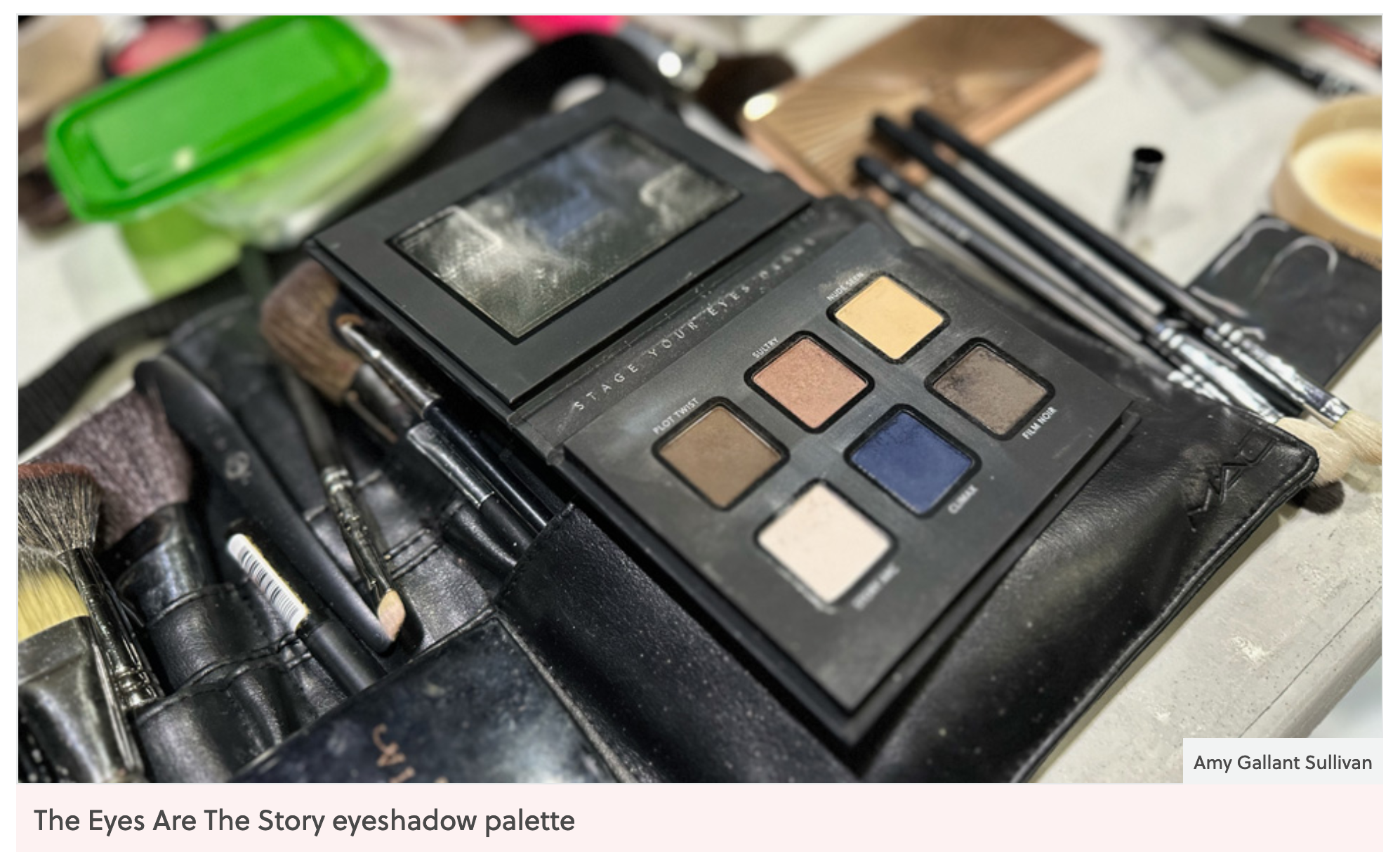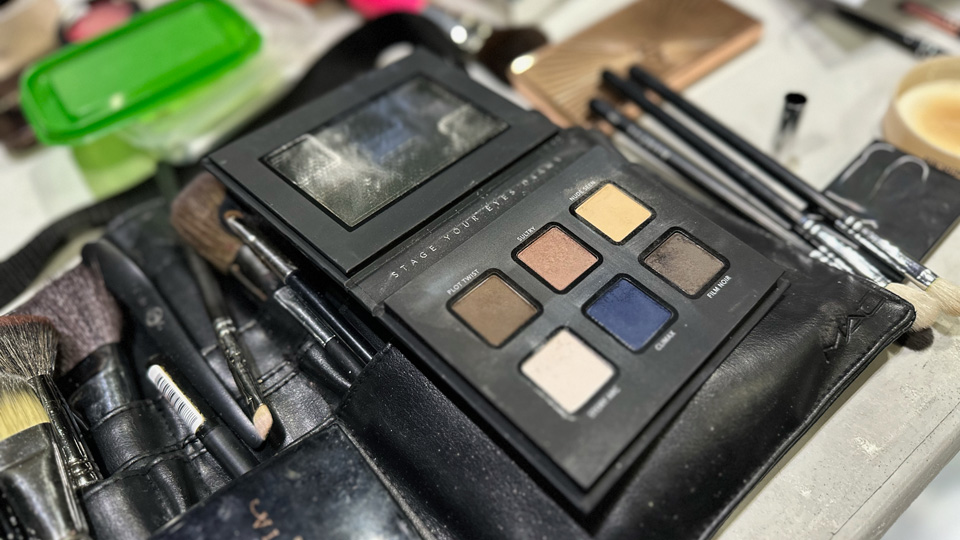Optometry Today: Cosmetics, Lifestyles, and Dry Eye

By Kimberley Young
Optocosmetics brand, Eyes Are The Story, took to 100% Optical in February, highlighting the links between lifestyle and dry eye.
For the first time, Eyes Are The Story provided make-up for the models of the 100% Optical catwalk, showcasing the make-up and skin care products.
OT caught up with Amy Gallant Sullivan, creator of Eyes Are The Story, and Dr Rachna Murthy, founder of Purifeyes, to discuss eye health, cosmetics, and dry eye.
Gallant Sullivan explained: “Eyes Are The Story is the world’s first optocosmetics and skincare brand made specifically for those with sensitive eyes. When we say sensitive eyes, we are speaking about everyone, because all eyes are sensitive.”
In particular, the products are designed for contact lens wearers, sufferers of dry eye disease, patients who have recently had surgeries, glaucoma patients, and those who work in front of computer screens.
Eyes Are The Story launched in 2020, during the pandemic. The founder has been working in ocular surface disease for 20 years with the Tear Film & Ocular Surface Society (TFOS), which she co-created and where she now holds the post of executive director.
“It is because of that organisation that I discovered the unmet need for eye-safe cosmetics,” Gallant Sullivan said. “Cosmetics are anything that you rub, pour, sprinkle, or spray onto your skin. That includes skin care. I coined the term optocosmetics because we’re talking about anything that you put on or around your eyes,” she added.
“What we’ve learned is that what is good for your skin is not necessarily good for your eyes,” she continued.
For Gallant Sullivan, working in the tear film and ocular surface is a family calling. Her father is Dr David A Sullivan, founder of TFOS.
Murthy explained that Purifeyes and Eyes Are The Story came together, “because I was looking for a range of products that I could recommend for my patients to use after surgery.”
The ophthalmologist’s client base includes actors and individuals who are required to attend black tie events within a short time after surgery.
Skin care and eye care
Products from Eyes Are The Story include a facial cleanser and serum, mascara, eyeliner, and soon-to-be-launched eyeshadow palette that was spotted on the 100% Optical catwalk.
Discussing the focus on skin care in particular, Gallant Sullivan said: “Everybody needs to wash their face and address lid hygiene, even before you go near mascara, eyeliner, or eye shadow. A lot of the products on the market that people use to wash their face include ingredients that are aggressive on the tear film and ocular surface, and can even compromise the functionality of contact lenses.”
Murthy commented: “Dry eye is a significant burden of disease. About 80% of the population have dry eyes to some degree, and most of it is preventable.”
Rather than focusing on treatments, Murthy would like to see more emphasis on prevention. She said: “Part of the issue is lifestyle choices – such as cosmetics.”


At the time of the interview, the brand is authorised to sell in more than 30 countries, which Gallant Sullivan described as “a massive coup, especially for a US-based brand.”
Gallant Sullivan pointed out that in the US, 11 chemicals are banned for the formulation of cosmetics, whereas in the European Union (EU), more than 1300 chemicals are banned.
She explained: “At Eyes Are The Story we have a collaboration with laboratories in the US, Canada, Italy, and the UK. Not only do we use the EU regulations as the base for our formulations, but we go a few steps further. We have tested and validated all of our eye safety claims. We’ve held trials for dry eyes, contact lens users, sensitive eyes, and sensitive skin.”
Educating patients around cosmetics
The pair emphasised a need for more education around cosmetics and eye health and highlighted the role of optometrists in support patient awareness.
Consumer press is full of talk around ‘clean’ beauty, they noted, a term that they were quick to point out ‘means nothing’ but reveals a demand amongst consumers for greater clarity and understanding around eye-safe cosmetics.
Murthy said: “We are looking for things that are safe for our future generations, for our kids and for us. That we can use during perimenopause, or pregnancy. It is all about safety.”
“There is a tide happening now,” she added. “The UK is slow to catch on compared to some other markets, but there is no reason why we should be, because we have the products available. We have a huge literature review with a scientific background, and people who are passionate about improving holistic care to patients in the marketplace.”
Providing an example of the importance cosmetics play in patient’s lives, Murthy shared that she specialises in a very rare condition that generally requires a surgical treatment.
“What my patients were most anxious about is the cosmetic change. It was very difficult to say to my NHS colleagues that these patients need to be looked after from an aesthetic point of view, as well as psychological and functional,” she said. “It is the same for dry eyes. There is a huge quality of life burden.”
“It is an aesthetic burden, and a preventable one,” she added.
How can cosmetics be discussed in practice?
Gallant Sullivan suggested that questionnaires or checklists sent to patients before an appointment could obtain lifestyle information, such as whether a patient uses cosmetics, what they use to wash their face with, and how much they are using computer screens.
“There are so many lifestyle attributes and qualities, and their choices impact their eyes,” she said.
Any basic information, leaflets, or products, available in the practice waiting room, can also encourage patients to consider their skin care and cosmetic routines, and how these might affect their eye health.
Murthy noted that the optometry sector is key in uncovering the cosmetic history of patients, and can advise patients in these areas.
This is a conversation that should be happening with all patients, and at all ages, the pair highlighted.
Gallant Sullivan said: “It is a hygiene conversation, a quality of life conversation, an anti-ageing conversation. It is eye health, and how our daily choices impact eye health in many ways.”
A 2022 report by consumer research platform, Attest, suggested British consumers use one to three products daily, and 85% do at-home beauty and grooming treatments.
Gallant Sullivan pointed out that if contact lenses are being prescribed to children, it could be valuable to ask: “What are they washing their faces with? Are they washing their faces with their contact lenses in?”
“Children are looking at social media, and what influencers use, and going to shops that sell adult products with retinols and anti-ageing, which can be quite harsh to the skin, but really harsh to the eye area,” she added.
In January this year, dermatologists in the UK raised concerns regarding an increase in adolescents engaging in extensive skincare routines including anti-ageing products.
Murthy shared: “If healthcare professionals have information in their practices that can be looked at by kids and adults, there is a whole new approach for prevention of dry eye disease.”
